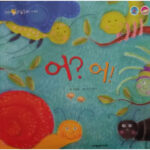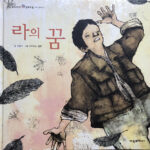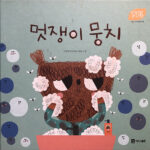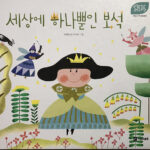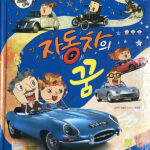
A child runs into a fish fossil.
Like it will swim out of the rock!
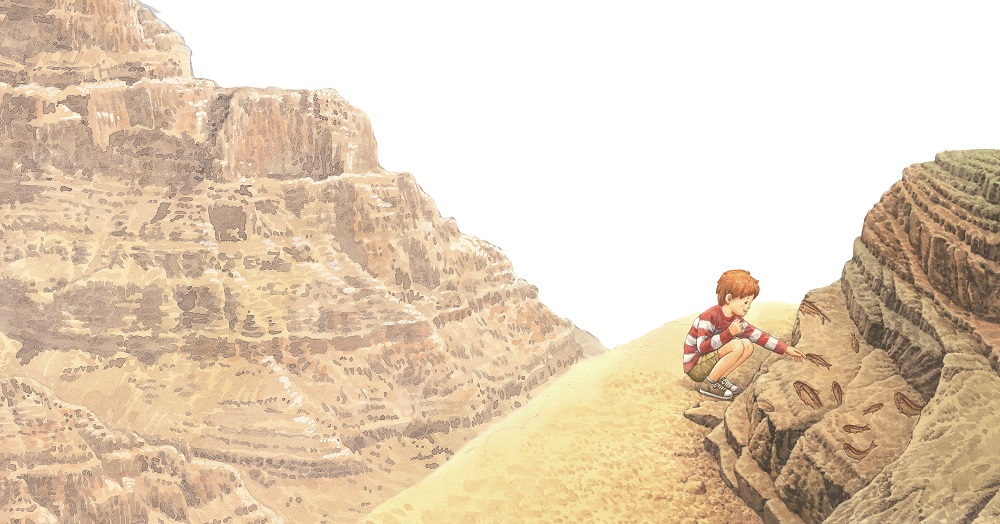
“Why has the fish turn into a tone?”
Curious as to what happened to
he fish, the child gets on a journy
to find out the Story that is hidden
under the Earth.
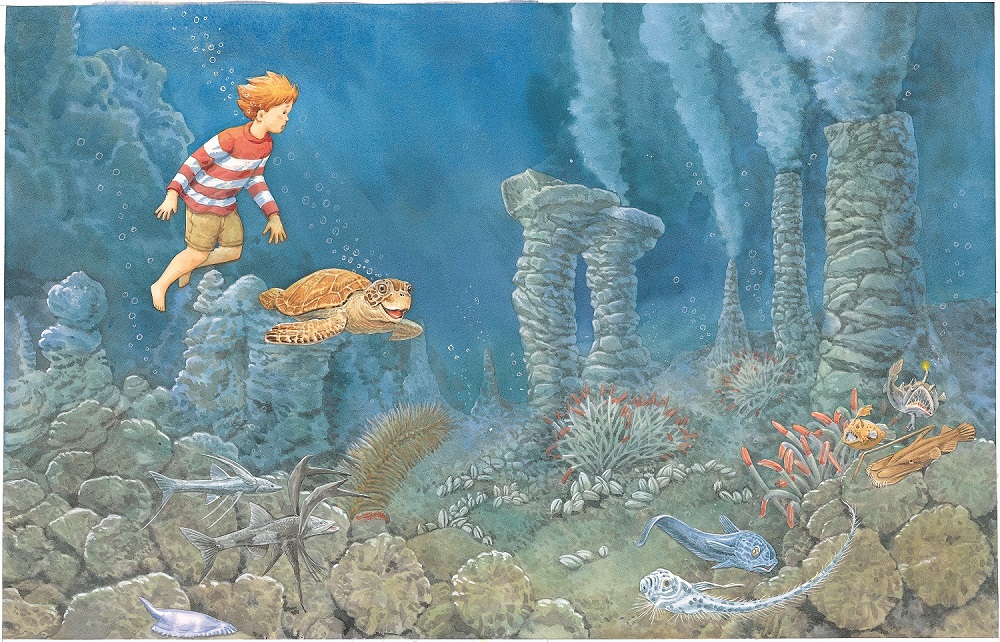
The kid visits deep into the oceans

The kid visits deep into the oceans
through the passage of time
dimensions, he visits the original
Earth that was peaceful and
beautiful.

And there he witnesses remarkable
events that happened to the
Earth’s landmasses–
where the large landmasses
cracked up, burst open,
and broke apart!
where the entire Earth drowned,
shaken, and split, and moved
.
The scientific information in the Story.
Each scene of the Story contains simple scientific lessons as Tips. Every scene of the Story is linked to Helpful Words that helps the reader find out more scientific contents.


Let’s find out! (Helpful words)
The Tips and Helpful Words explain the scientific details easily while reading the Story
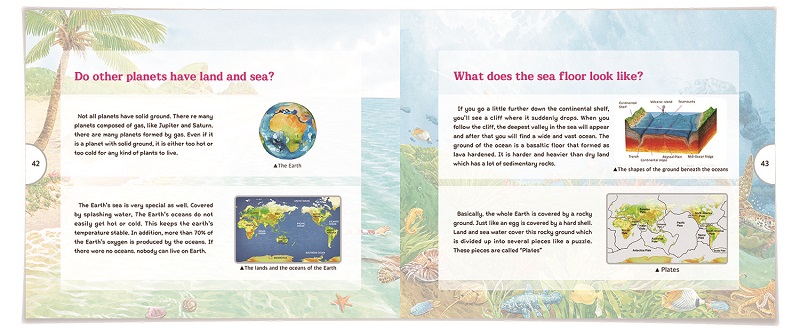

Enlarge it
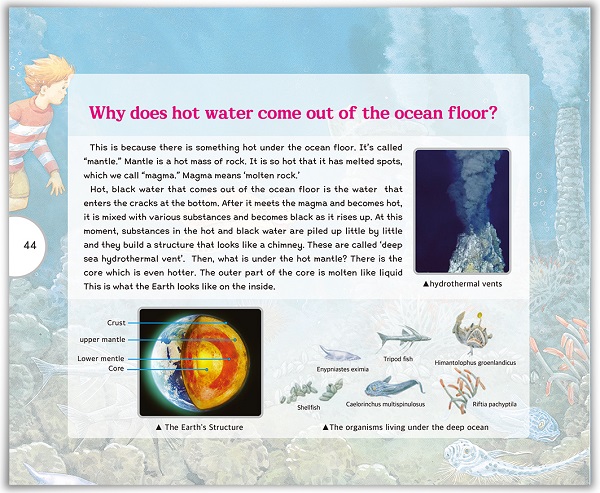
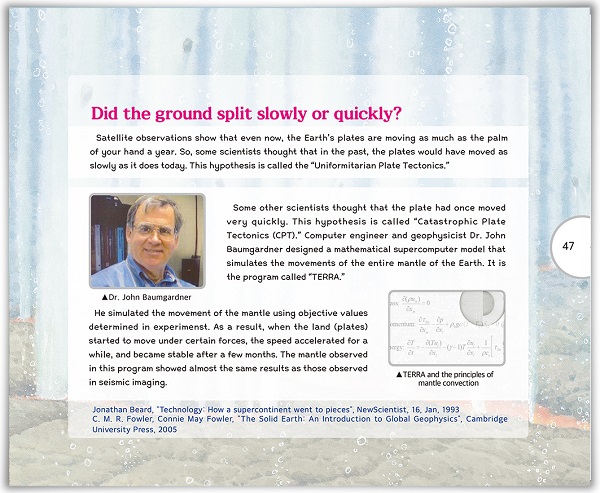
Long ago, people used to think that the Earth was flat and plain-shaped everywhere. But someone asked “Is that really so?”, and more discovery led to the realization that the Earth is round like a ball. It is important that we ask questions about what we take for granted and how we tend to think. What kind of questions, then, did scientists ask lately? And what did they find out?
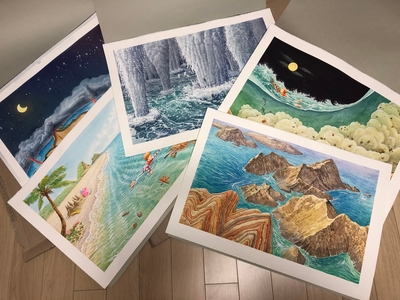
Table of Helpful words
- Do other planets have land and sea?
- What does the sea floor look like?
- Why does hot water come out of the ocean floor?
- Did land and sea look the same as they do today?
- What is the evidence that all continents used to be one landmass?
- Did the ground split slowly or quickly?
- What would happen when the ocean floor splits quickly?
- How much water is there inside the Earth?
- How did layered sedimentary rocks form?
- How did fossils form?
- What would happen to people and animals?
- What happened when the volcano Mt.St. Helens erupted?
- How could a piece of land sink beneath another?
- How fast did the grounds move?
- Where did the water that used to cover the Earth go?
- Couldn’t all the fish die if the lava heated the ocean waters?
- How did the Ice Age come about?
- When did the dinosaurs live?
- What do the land masses that sunk look like today?
The age group this book is written for
Just looking at the pictures will give you glimpses of the contents.The words were written at a simple level so that they can be read as easily as looking at the pictures. However, reading the words, the pictures, and the helpful words together carefully will help you understand catastrophic plate ectonics more deeply. This book was written to be understood by little children, grade school students, middle and high school tudents, and even adults. Anyone can read it!
Foreword by Dr.John Baumgardner

With its astonishing variety of living things—its mammals, birds, reptiles, amphibians, fish, its insects and other invertebrate animals, together with a similar diversity of plant and microbial life—the world around us prompts us as human beings to ponder how all this amazing reality came to be. And as we have opportunity to study the earth’s physical features, and in particular its rocks, we discover hints that the earth has undergone vast physical changes—changes that almost certainly have played a huge role in shaping the world and the organisms it so marvelously sustains today.
What major insights into the earth’s past do the rocks reveal? Almost everyone has seen the layers of sedimentary rock commonly displayed in the walls of canyons and highway road cuts. Sedimentary rock forms when sediment particles, such as sand and clay, suspended in moving water, drop out of suspension and accumulate at the bottom of the water. Immense thicknesses of sedimentary rocks blanket the surface of the continents today. The average thickness is about 2,000 m (6,000 ft), although at any given location thickness can vary from zero to several times the average value.
A striking aspect of these sedimentary rock layers is that so many of them contain fossils. Fossils are special because of the highly restricted conditions under which they form. To be preserved as a fossil generally requires rapid and complete burial of an organism to isolate it from scavengers which otherwise would quickly cause its remains to vanish. Fossils are therefore a reliable indicator of rapid sedimentation. The observation that fossil clams are usually found with the two halves of their shell closed firmly shows that they were buried while still alive in a short span of time. Note that the larger the organism the more severe is the constraint on how rapid the sedimentation must be to bury the organism completely and quickly (think dinosaur!).
Another startling feature of many of these sedimentary layers is their vast horizontal extent. Many extend for many hundreds to thousands of km in both north-south and east-west directions, often with few if any erosional channels dissecting the boundary with the layer below or the layer above. What sort of depositional conditions could produce such uniform, horizontally extensive layers that are so radically different from the sedimentary deposits being formed on the continents today? This indeed is one of the earth’s major secrets.
I heartily commend the authors of this beautifully illustrated book for bringing together such a wide diversity of intriguing facts about the earth. Many people have been exposed to these facts and discoveries through nature books and documentaries. However, fitting all these diverse observations together into a clear and coherent understanding of the earth’s past is not a simple undertaking. This book in my view does an outstanding job in helping a person get the most crucial of the puzzle pieces in their proper locations to be able to begin to gain a peek of the big picture with all its excitement and drama.
Picture Book writer & editer.
Every book I wrote is precious to the writer, but “The secret under the earth” is a special book among them. The period of planning and preparation is close to 5 years. Since it is a science picture book, I have received several inspections from renowned scientists at home and abroad and Dr. John Baumgardner’s laboratory to see if there are any mistakes based on the theory of each sentence and image. The process of finding out the secrets of the past, in which the Earth’s continent, was cracked and divided., was like a process in which a detective solved a case by solving a clue one by one. I am happy to meet such a beautiful book after hard work. Thank you all for your help.
I majored in Early Childhood Education at Baehwa Women’s University. There are “어? 어!” (Dona Turner Illustration) , “라의 꿈”(David Lupton Illustration), “아마존에서 온 친구”(Valeria Cis Illustration) and many books written by Jungah Seo .
WORKS

